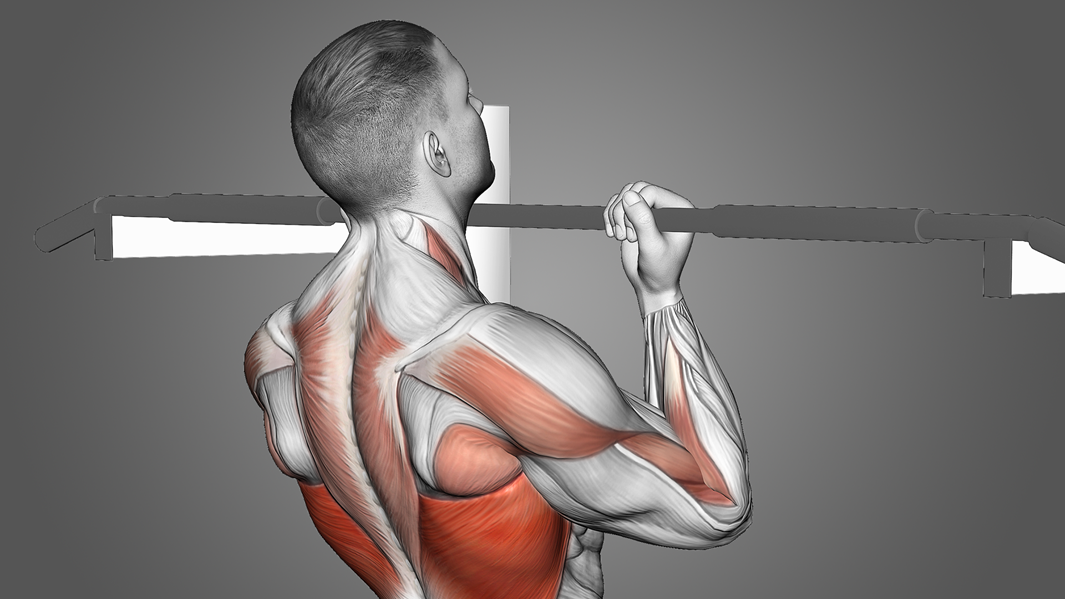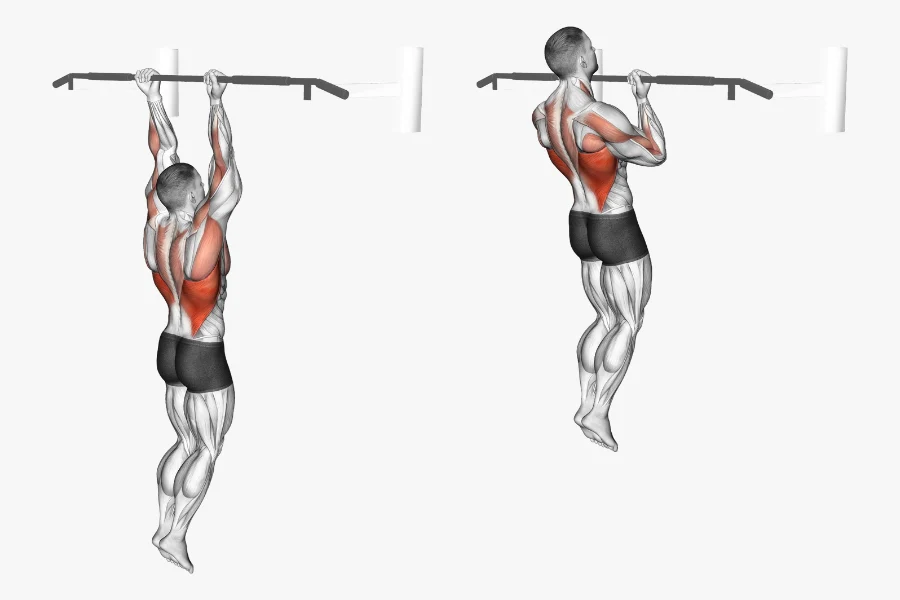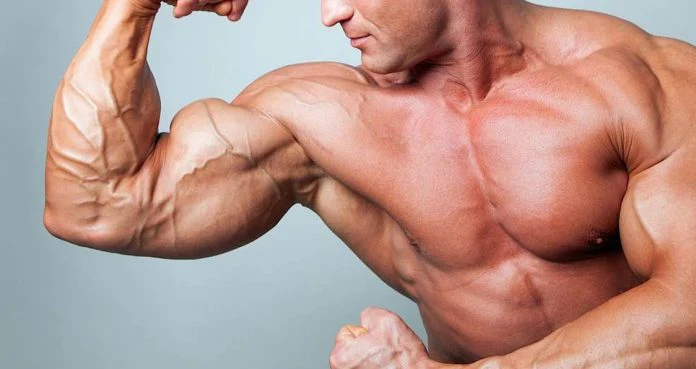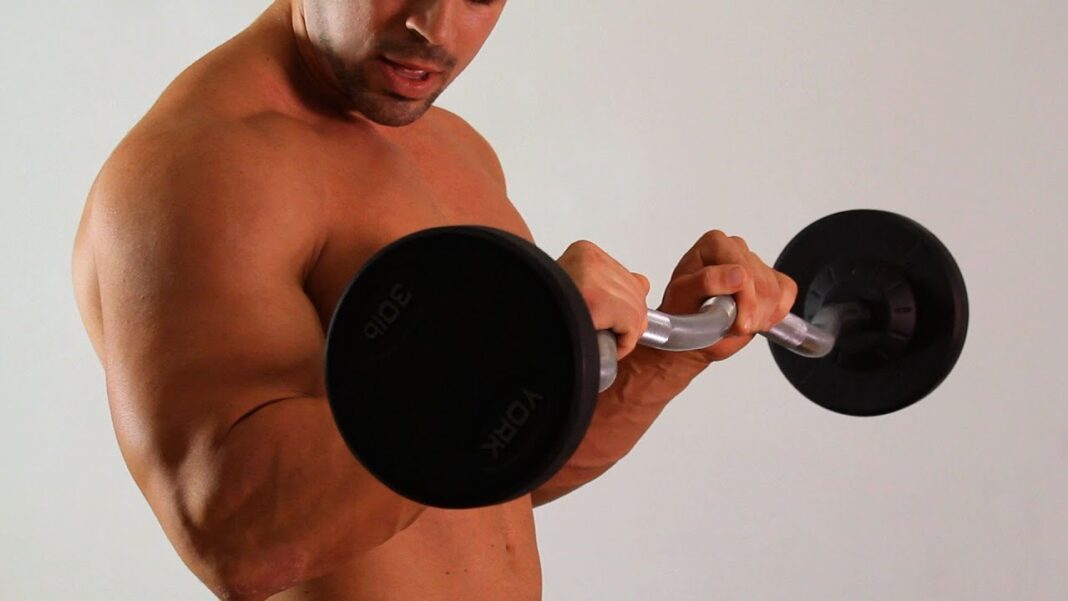Chin-Ups (Biceps-Focused): The Compound Curl You’re Probably Underrating
When most lifters think “biceps,” they picture curls — bars, dumbbells, or cables. But ask any old-school bodybuilder with dense, powerful arms, and they’ll tell you: the Chin-Up has built as many biceps as any curl ever has.
Done correctly, the chin-up is far more than a back exercise. With a supinated (underhand) grip, it becomes a compound biceps builder that also trains the lats, traps, and core.
It teaches you to move your own bodyweight through space — a hallmark of genuine functional strength — while thickening the upper arms and improving pulling power.
From a bodybuilder’s perspective, the biceps-focused chin-ups are the bridge between aesthetic and athletic training. It forges shape, size, and strength simultaneously.
Muscles Worked
- Primary:
- Biceps brachii (long and short heads)
- Latissimus dorsi
- Secondary:
- Brachialis and brachioradialis
- Rhomboids, teres major, rear deltoids
- Core stabilizers
👉 In a biceps-focused chin-up, you intentionally shift the emphasis away from the lats and toward the elbow flexors by controlling grip, elbow path, and torso angle.
Why Chin-Ups Are a Top-Tier Biceps Builder
- Heavy, Natural Loading
- You’re curling your entire bodyweight — progressive overload built in.
- Compound Tension
- Unlike isolation curls, you’re also stabilizing your scapulae and core. This synergy develops thicker, more functional arms.
- Supinated Grip Advantage
- Turning palms toward you maximizes biceps activation through a full range of motion.
- Superior Stretch Under Load
- At the bottom of a chin-up, the biceps are fully elongated while supporting bodyweight — a potent hypertrophy stimulus.
- Balanced Physique Development
- Because you also train the upper back, you avoid the “biceps-only” imbalance that pure curl routines can create.
How to Perform the Biceps-Focused Chin-Ups
Setup
- Bar Height:
- Use a pull-up bar high enough that you can hang freely without feet touching the floor.
- Grip:
- Underhand (supinated) grip, shoulder-width or slightly narrower.
- Wrists neutral, thumbs wrapped for security.
- Body Position:
- Engage core.
- Cross ankles behind you or keep legs straight.
- Maintain a slight arch in the spine, chest up, eyes forward.
Execution
- Initiate the Pull:
- Start from a dead hang with arms straight.
- Before pulling, retract your shoulder blades slightly — this protects the shoulders.
- Drive with the Elbows:
- Think “elbows to ribs,” not “chin to bar.”
- Pull until your chin clears the bar or the bar touches upper chest.
- Squeeze at the Top:
- Hold for 1–2 seconds; flex the biceps hard.
- Controlled Descent:
- Lower yourself slowly for 3–4 seconds until arms are fully extended again.
- Don’t drop or relax at the bottom — keep tension constant.
Breathing
- Exhale while pulling up.
- Inhale on the controlled descent.
Key Form Cues
✅ Keep chest tall — don’t hunch or roll shoulders forward.
✅ Lead with elbows, not wrists.
✅ Avoid excessive swinging or kipping.
✅ Maintain full range — straight arms at bottom, chin over bar at top.
✅ Think of it as a weighted curl plus row.
Common Mistakes and Fixes
| Mistake | Problem | Fix |
| Using momentum (kipping) | Removes tension from biceps; stresses joints. | Keep legs still and core braced. |
| Too-wide grip | Shifts load to lats; reduces elbow flexion. | Shoulder-width or slightly narrower is ideal. |
| Half reps | Misses the stretch at bottom and peak contraction. | Full hang to full chin-over-bar range. |
| Flaring elbows outward | Less biceps activation, more shoulder strain. | Drive elbows straight down and slightly forward. |
| Neck craning | Artificial “chin-over” without true arm work. | Keep neutral head; focus on arm movement. |
Variations
- Assisted Chin-Up (Band or Machine)
- Perfect for beginners or high-rep hypertrophy work.
- Allows strict tempo while controlling load.
- Weighted Chin-Up
- Add a dip belt or hold a dumbbell between ankles once bodyweight sets feel easy.
- Builds strength and thickness rapidly.
- Close-Grip Chin-Up
- Narrower grip emphasizes the short head of the biceps for front-arm fullness.
- Sternum Chin-Up (Gironda Style)
- Lean back as you pull; aim bar to lower chest.
- Stretches lats while contracting biceps maximally — advanced and brutal.
- Tempo Chin-Up
- 3-second ascent / 4-second descent for hypertrophy.
- Eccentric-Only Chin-Up
- Jump to top position, then lower slowly over 5–6 seconds.
- Builds control and tendon strength.
Programming Guidelines
For Hypertrophy (Muscle Growth)
- Sets: 3–4
- Reps: 8–12 (bodyweight or assisted)
- Rest: 90 seconds
- Tempo: Slow eccentric focus.
For Strength & Density
- Sets: 5
- Reps: 4–6 (weighted if possible)
- Rest: 2–3 minutes
- Goal: Progressive overload via extra weight or total reps.
For Endurance & Conditioning
- Sets: 3
- Reps: 15–20 (band-assisted)
- Rest: 45–60 seconds
- Goal: Metabolic stress and pump.
Integration Into Your Routine
Example Pull Day
- Barbell Row – 4×8
- Lat Pulldown – 3×10
- Chin-Up – 3×8–12 (biceps-focused)
- Dumbbell Hammer Curl – 3×10
- Reverse Curl – 3×12
Example Arm Day (Compound + Isolation)
- Weighted Chin-Up – 4×8
- Barbell Curl – 4×10
- Incline Dumbbell Curl – 3×12
- Rope Pushdown – 4×12
Example Full-Body Session
- Squat – 4×6
- Bench Press – 4×6
- Chin-Up – 4×8–10
- Romanian Deadlift – 3×10
👉 Put chin-ups early in the session — they’re demanding and best done while fresh.
Advanced Training Strategies
- Weighted Progression Ladder
- Start with bodyweight sets. Add 2–5 kg every few weeks while maintaining form.
- Rest-Pause Chin-Ups
- Perform to near-failure, rest 15 seconds, repeat mini-sets until total target reps hit.
- Cluster Reps
- 3 reps, 15 sec rest × 5 clusters = 15 controlled, high-quality reps.
- Eccentric Emphasis
- Lower over 6 seconds to create deep micro-tears for hypertrophy.
- Superset with Curls
- Chin-Ups → Incline Dumbbell Curls = total biceps annihilation.
Bodybuilder’s Tips
💡 Think “curl your body up.” Visualize your forearms flexing the elbows, not just pulling with the back.
💡 Keep shoulder blades stable. Controlled scapular retraction isolates the arms better.
💡 Vary grip width over time. Slight changes hit long vs. short biceps heads differently.
💡 Track total volume. Aim to increase weekly tonnage or total reps under control.
💡 Finish with isolation. Use cable or preacher curls after chin-ups to polish detail.
Strength vs Aesthetic Outcomes
| Goal | Chin-Up Benefit |
| Strength | Builds full-body pulling power and elbow-flexor strength under heavy load. |
| Hypertrophy / Aesthetics | Adds dense, natural mass to biceps and forearms. |
| Joint Health | Strengthens elbows and shoulders through closed-chain stability. |
| Functional Performance | Enhances climbing, gripping, and overall athletic capacity. |
👉 For a bodybuilder, chin-ups create dense arms — not just pumped, but visibly strong.
Practical Takeaways
- Supinated grip = biceps emphasis; pronated grip = back focus.
- Perform chin-ups early in training for maximal output.
- Prioritize slow eccentrics for growth.
- Add load progressively once 10–12 clean reps are easy.
- Pair with isolation curls to hit every fiber.
Conclusion
The Biceps-Focused Chin-Up is more than a body-weight movement — it’s a compound curl that fuses size and strength. It trains the biceps under heavy tension while reinforcing the lats, traps, and core, giving you balanced, athletic, and aesthetic development.
For bodybuilders, it’s the missing link between isolation and real-world performance — the move that rounds out an arm that looks as strong as it performs.
If you can curl your body over the bar with control and precision, you’re not just strong — you’re sculpted.
Master the chin-up, and your arms will never look flat again.




